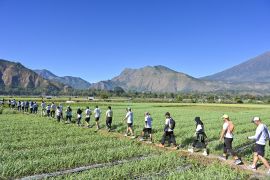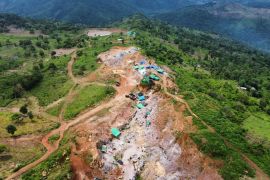"Currently, farm animals that have been infected with FMD are cattle, buffaloes, and goats," Head of the Central Lombok Agriculture Office Lalu Taufikurahman said here on Friday.
Based on the latest data from the FMD Task Force, the number of cattle infected with FMD has reached 10,995, he informed. However, around 50 percent or 5,442 heads of cattle have recovered.
Meanwhile, the number of infected buffaloes has reached 112, of which 61 have recovered. As for goats, the number of infected animals has reached 60, and 16 have recovered.
Thus, the total number of farm animals infected with FMD has reached 11,167, of which 5,519 have recovered.
The disease has now spread to 102 out of 139 villages in Central Lombok, he noted. As part of anticipatory measures against the disease, the local government has shuttered all animal markets until June 20, according to a letter issued recently.
"The animal market is still closed for the time being," Taufikurahman said.
Although the FMD outbreak has continued to spread, the availability of animals for the Islamic ritual of Qurbani (animal sacrifice) in Central Lombok is still safe, he affirmed.
"We have encouraged entrepreneurs of Qurbani animals to open kiosks to sell the animals by implementing the FMD health protocols so that the farm animals that will be used for Qurbani remain healthy," he informed.
Earlier, on Tuesday (June 14, 2022), the government commenced the nationwide FMD vaccination for livestock from Sidoarjo District, East Java.
The vaccines are being prioritized for healthy animals that are at high risk of infection, that is, animals at livestock breeding centers, community-owned dairy farms, dairy cooperatives, and beef cattle farms.
The Ministry of Agriculture has forecast that 17 million livestock will receive the vaccine, or around 80 percent of the livestock population in provinces affected by the disease. The livestock will be inoculated thrice: twice in 2022 and once in 2023.
Translator: Akhyar Rosidi, Raka Adji
Editor: Rahmad Nasution
Copyright © ANTARA 2022












